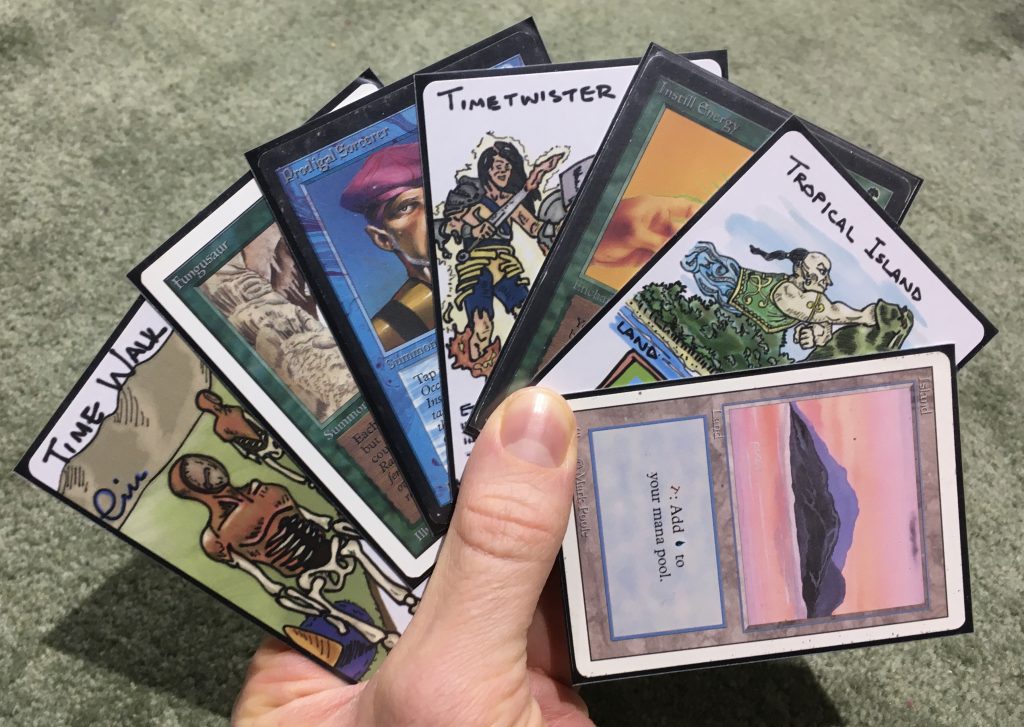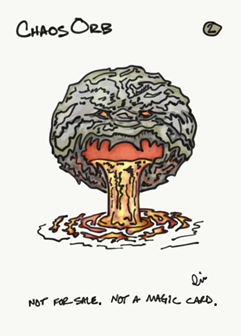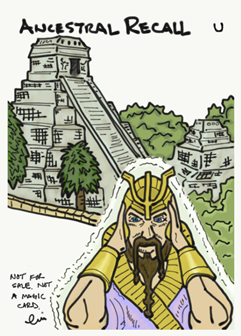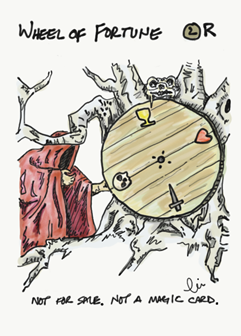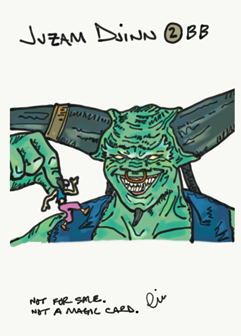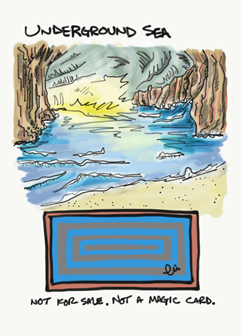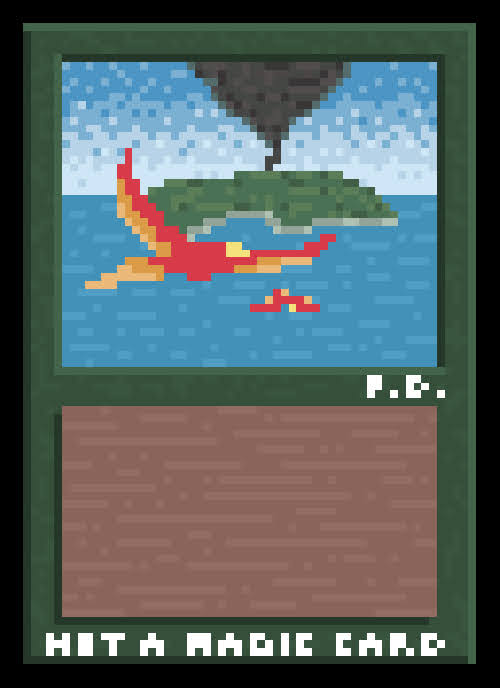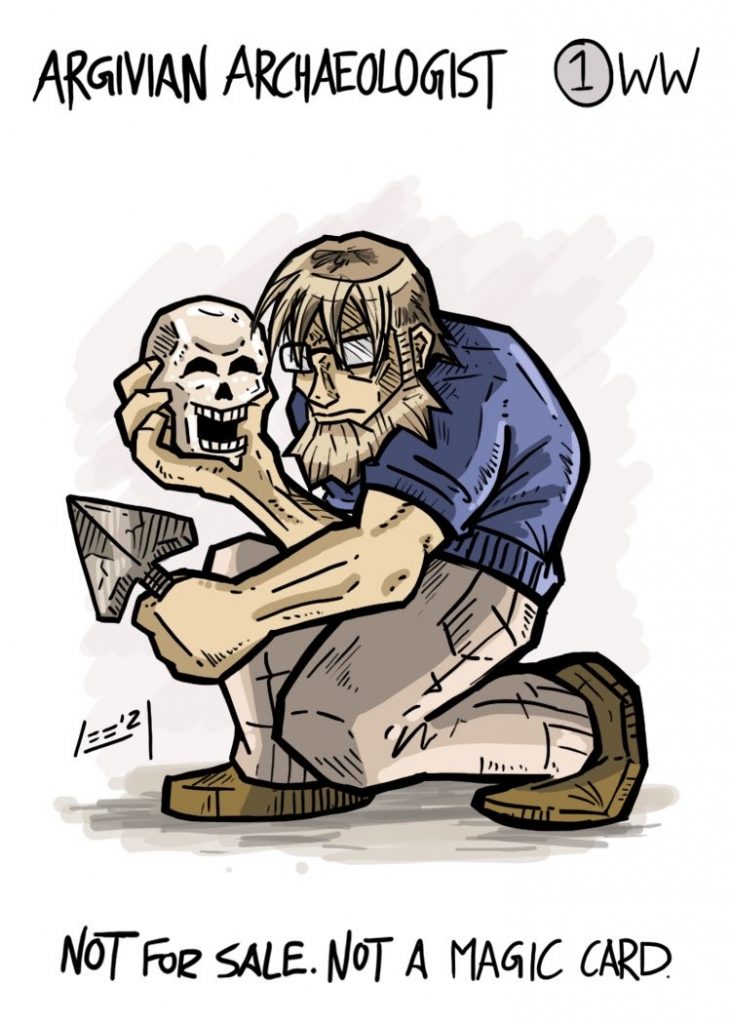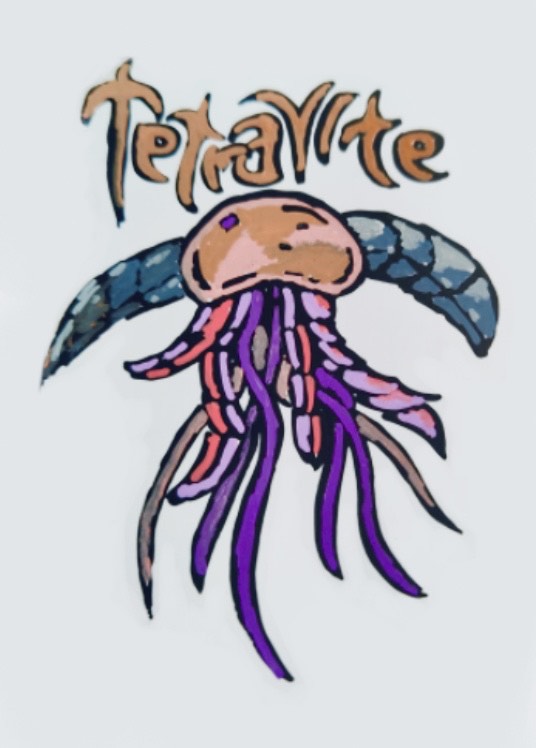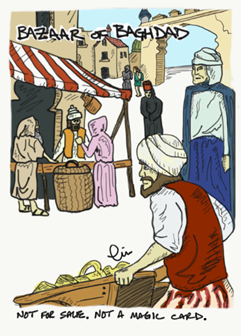Print the fan art here to make Magic playtest cards and tokens that look good and are easily identifiable by opponents during games of Old School.
Image gallery links: Here and here. The images at the two links are the same, just in different sizes. Advice on printing is below. Check back here for updates. We will continue to expand our gallery with new cards!
Artists, please contact us to share your own art here. It could be tokens, your own versions of cards already posted here, or new cards. Join us in appreciating Old School art and promoting card accessibility!
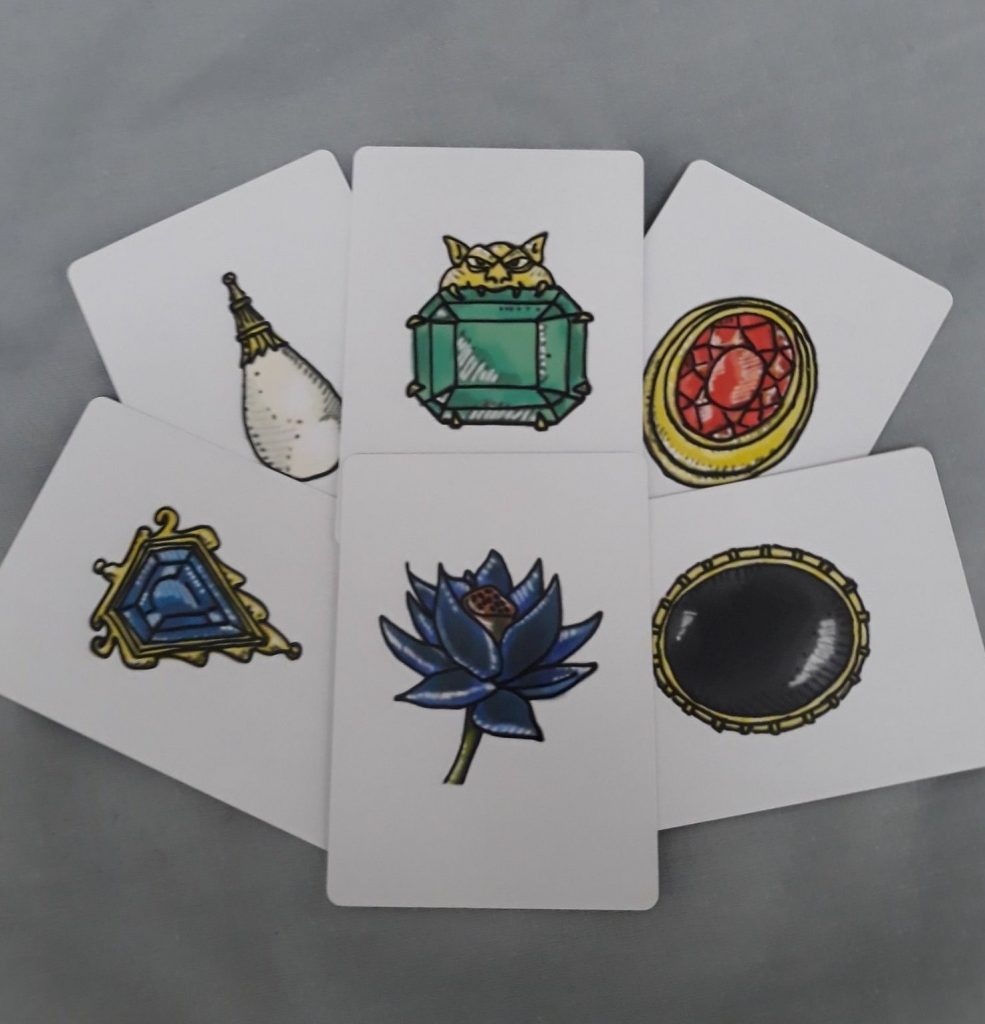
About the Artists
We now have art from multiple contributors! For a list of who did each card, scroll down in the Google Doc version of our gallery (again, here).
Eric Fletcher, who contributed most of our art, is an enthusiast of Magic art, Old School, and Johnny Cash. Eric is a husband and father of two from Idaho who would play Reanimator more if it was any good. Follow Eric on Twitter here. Eric has done similar art for Premodern/Middle School MtG (here and here).
Matthieu Le Goff is a father of three in Brittany, France, who started playing Magic in 1995 and has especially loved huge Type 1 singleton decks since before it was cool. During the first lockdown, he started playing seven-point singleton and creating art for Old School cards. See more on his Facebook.
Dave “Derfington” Lee is a Toronto-based alter artist and author of the MTG webcomic Durdling Around. Check out his work on Instagram and Twitter.
Shaman Ben, also known as the Librarian of Leng, is one of the progenitors of the U.S. Old School MtG community. He is well-known for his unique and subversive alters of Old School cards. Ben is a mysterious man who can no longer be found on social media.
Paul DeSilva is an Animator and a founding member of the Sisters of the Flame. His favorite pastimes include beating face with fatties, and pretending Counterspell doesn’t exist. Check out Paul’s Old School MtG webpage here.
Nick Brier loves to paint in his free time. He specializes in Old School art extensions under the name NB Alters. His Instagram is here.
Mattias “Slanfan” Berggren started playing in the fall of 2017 and immediately got hooked. He loves everything about Old School, especially the tension when playing real ante. He is a proud member of the MtG X-Files crew and part of the small group of degenerates from hell. Follow him on Twitter here.
Matt Bessel, also known as the People’s Champion, is a Dice City Derelor and a connoisseur of Lightning Bolts and beatdowns who occasionally does alters and art on the side for fun.
Printing Advice
Visit this Google Doc for playtest cards pre-sized to fit in a standard sleeve. Print on standard printer paper, cut them out, and tuck the paper inside a sleeve holding any card. Download and edit the Google Doc to select specific images for printing.
Visit this Google Photos gallery for larger images, which we recommend printing on 63x88mm cardstock with thickness of S30 or S33. We prefer keeping the card backs blank, to ensure nothing shows through the back of a sleeve. Search Reddit or the Web for more advice on how to print custom Magic cards. Certain photos in this post show our playtest cards on cardstock.
Our Philosophy
Old School Magic cards are absurdly expensive these days. Playtest cards are a fantastic alternative for use in casual games and at community-organized, non-DCI-sanctioned events. We hope the images here will make it easier for players to create their own playtest cards.
A “playtest card” is a stand-in for an actual Magic card. “Proxies” is not the right term for what we support, because people sometimes use that term to refer to counterfeit cards. Counterfeits are bad. We resolutely oppose counterfeit cards and do not support their creation or use in games.
The Toronto Old School community supports the use of playtest cards. We allow them in all of our events, including webcam-based online events.
People playing casual Magic should not have to spend hundreds or thousands of dollars to enjoy casting cards like Chaos Orb and Timetwister. Moreover, we find playtest cards much more enjoyable if they are aesthetically pleasing—not just “Black Lotus” scribbled on the back of a common. Playtest cards with art are not just more visually appealing but also are more easily identified by opponents, facilitating smooth gameplay—especially in socially-distanced games played by webcam.

Clarifying Statements
The images presented here are not real Magic cards, and they are not intended to pass as such. They are playtest card images meant for personal, non-commercial use. Nothing here is for sale.
The images posted here (or linked to) are free for anyone to view, access, share, and use. You do not need to pay us, obtain our approval, or give us credit in order to use these images.
Per Wizards of the Coast policy, we want you to know that the images posted here (or linked to) are unofficial Fan Content permitted under the Fan Content Policy. Not approved/endorsed by Wizards. Portions of the materials used are property of Wizards of the Coast. ©Wizards of the Coast LLC.
Another relevant reference from Wizards of the Coast is this statement about their support for playtest cards.
